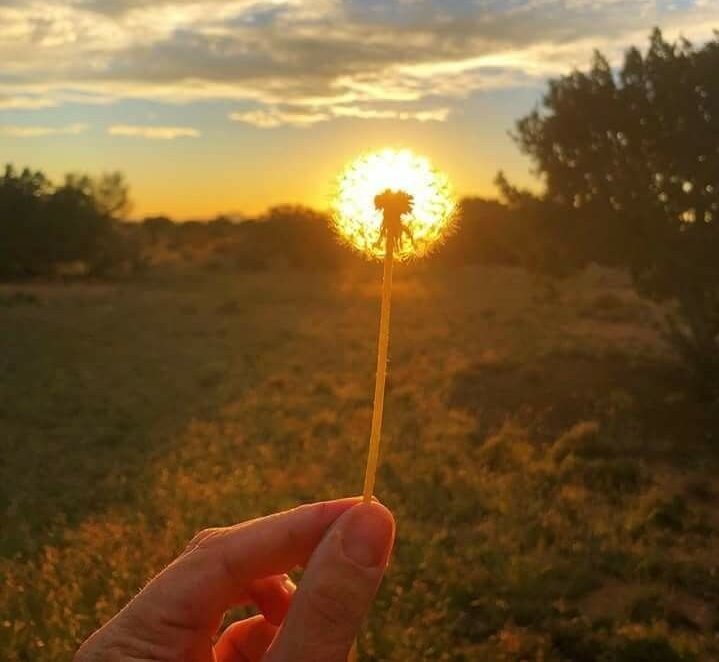Time Enough for Love: Reconsidering Our Modern Busyness
In recent years, global disruptions—ranging from health crises to social upheavals—have forced entire societies to pause and reflect. For a brief moment in history, the relentless hum of human industry slowed to a crawl, and many of us found ourselves at home, confronting not only our own thoughts but the reality of how we’ve been living. This “quiet time” revealed a stark truth: we often confuse busyness with productivity, forgetting to make time enough for love, genuine connection, and soulful fulfillment.
Yet, as we begin to emerge from these disruptions, we face a choice. Will we revert to the previous pace of go-go-go, or harness the lessons from that collective pause? This blog delves into why our frantic routines warrant reconsideration, how fear and isolation can stifle our capacity to love, and what opportunities lie within a more mindful, compassionate way of life.
Lessons Learned from Stillness
During global lockdowns and isolation measures, many discovered that life could be different—albeit disorienting at first. Suddenly, commutes disappeared, overscheduled agendas vanished, and we no longer had to juggle ten tasks at once in a single day. That open space, though unsettling, also offered the possibility of soulful retreat, a chance to reflect deeply on who we are beneath our typical roles.
Media reported pollution lifting to reveal the beauty of the natural world in many parts of the globe, of dolphins returning to cleaner waters in the Venetian canals, of the earth rejuvenating itself. During the COVID-19 pandemic, the global slowdown in human activities had remarkable environmental consequences, which have been well-documented by authoritative organizations. Reports by the United Nations Economic Commission for Europe (UNECE) highlighted significant reductions in air pollutants, including nitrogen oxides (NOx), due to decreased industrial and transportation activities. Similarly, NASA observed up to a 50% drop in nitrogen dioxide emissions in certain regions, leading to cleaner air and improved visibility. The United Nations Environment Programme (UNEP) further emphasized how waste management practices adapted during the pandemic, showcasing a critical aspect of environmental health. Studies by NOAA and the OECD reinforced these findings, showing that greenhouse gas emissions fell dramatically during lockdowns, and many cities experienced improved air quality and reduced pollution levels. These reports collectively underscore how reduced human activity offered a glimpse into a cleaner, more sustainable environment and highlighted the potential for large-scale environmental recovery when global efforts align.
-
Reconnecting with Simplicity
For some, these quiet moments meant noticing simple pleasures: brewing tea slowly, reading a novel in the afternoon sunlight, or offering undivided attention to family members. These small acts can be profound catalysts, reminding us that we do have “time enough for love” if we strip away certain distractions. -
Facing Our Inner Worlds
However, stillness also reveals the clutter of our minds. Emotions and memories we’ve long sidestepped can surface, inviting us to reexamine old wounds and question our life’s trajectory. By acknowledging the discomfort, we open the door to emotional healing, forging deeper empathy for ourselves and others.
The Myth of Unending Progress
One driving force behind modern busyness is the assumption that progress must always accelerate. We measure success in quarter-over-quarter growth, new possessions, or the constant pursuit of the next big thing. Yet this myth of unending progress often leads to burnout, disconnection, and a lopsided focus on productivity at the expense of well-being.
-
Unlimited Growth vs. Finite Resources
Our planet has shown repeatedly that its resources are not infinite. Overconsumption and pollution contribute to climate change and ecological imbalance. Similarly, our emotional and psychological resources can be depleted if we never pause. Slowing down isn’t just an option—it might be essential for survival, both individually and collectively. -
Erosion of Community
When busyness becomes our default, community often suffers. Neighbors become strangers, extended family ties weaken, and social media fosters superficial engagement over deep conversation. The result is a sense of isolation that, ironically, intensifies the inner void we try to fill by being even busier.
A Self-Inflicted Silo: Isolation in a High-Tech Age
Our world is technologically advanced yet strangely isolated. Smartphones, tablets, and wearable devices keep us “plugged in,” but how connected are we, really? Before any global crisis forced us apart, many of us were already living in silos—communicating primarily through screens, sometimes oblivious to the real human stories unfolding around us.
-
Online Communities vs. In-Person Depth
Virtual forums can be lifesavers for marginalized groups seeking camaraderie. However, when digital communication supplants face-to-face relationship-building, empathy can erode. Human nuances—the warmth of a smile, the subtlety of body language—are overshadowed by emojis and character limits. This shift can make it harder to sense suffering or celebrate triumphs authentically. -
The Hidden Prevalence of Loneliness
Studies show loneliness is increasing worldwide, even among those surrounded by crowds or active on social networks. Relearning to share space physically and emotionally—to genuinely see and hear each other—matters more than ever. By carving out time enough for love, we can begin to mend the invisible walls technology has built.
How Fear Distorts Our Capacity to Love
Fear is a powerful motivator—one that can drive us toward protective, sometimes irrational behaviors. At the onset of any major crisis, many revert to a survival mindset, hoarding resources or retreating into suspicion. Darwin’s “survival of the fittest” resurfaces as a primal undercurrent, overshadowing cooperation with competition.
-
Reptilian Brain vs. Evolved Compassion
Biologically, our reptilian brain is designed for self-preservation. Yet as social, empathetic beings, we also have the capacity for altruism and compassion. The tension between these forces is evident in how societies respond to emergencies. Do we hoard groceries for ourselves, or share with neighbors in need? Do we spread fear on social media, or champion uplifting stories? -
From Fight-or-Flight to Embrace
Moving beyond fear requires conscious effort. It may mean practicing mindfulness, seeking therapy, or engaging in community outreach. By intentionally feeding our compassionate instincts, we reaffirm that love, care, and unity can triumph over panic-induced selfishness.
A Planetary Wake-Up Call
During certain global slowdowns, many noticed environmental changes—cleaner skies, clearer waters, animals returning to habitats from which they’d long been displaced. These observations highlight nature’s resilience and the destructive toll of unchecked human activity.
-
Nature’s Quick Response
When factories paused and transportation slowed, smog levels dropped dramatically in several major cities. Reports circulated of dolphins in waters once heavily polluted, testifying to how swiftly ecosystems can recuperate if given a breather. -
A Glimpse of Another Future
These revelations go beyond a momentary snapshot; they challenge us to imagine a future where stewardship, not exploitation, defines our relationship with the planet. If we apply the principle of “time enough for love” to our environment—fostering patience, nurturing resources, and respecting ecological limits—sustainability becomes an attainable reality.
Reassessing What “Normal” Really Means
People often claim they can’t wait for things to return to “normal.” Yet was “normal” serving us well, or was it a pattern of burnout, neglect, and inequality? Each crisis that confronts humanity also offers an invitation: What do we want to carry forward, and what deserves to be left behind?
-
Questioning Our Past Routines
If “normal” was living at breakneck speed, rarely seeing loved ones, ignoring mental health, or turning a blind eye to social injustice, is that truly ideal? Pausing helps us see cracks in the foundation, whether in personal life or societal structures. -
Choosing Intentional Lifestyles
In searching for “time enough for love,” we may decide to keep simpler habits, like cooking together at home or finding daily gratitude rituals. Or we might reevaluate career paths that once seemed glamorous but left us spiritually drained. The choice is ours: either we revert to autopilot, or harness these insights to form a new normal aligned with compassion and authenticity.
Building Deeper Connection and Mutual Care
Just as ecosystems thrive on biodiversity and balance, human communities flourish when anchored in mutual care. True love flourishes in environments where empathy, respect, and understanding are not only valued but practiced.
-
Practical Steps to Foster Connection
- Local Engagement: Support small businesses, attend neighborhood gatherings, and create networks of community assistance.
- Empathetic Listening: Instead of waiting for your turn to speak, genuinely tune into the emotions of friends, colleagues, and even strangers.
- Volunteering & Service: Donating time or skills to local charities can deepen your sense of purpose and connection.
-
From Private Cocoon to Shared Community
Avoiding busyness for busyness’ sake can free up the mental and emotional space to show up for others. Whether it’s helping an elderly neighbor with groceries or offering mentorship to a younger colleague, these acts can heal the isolation that modern life often imposes.
Nurturing a Soulful Retreat Amidst Chaos
Carving out daily or weekly “retreat” time can be a game-changer—whether it’s five minutes of quiet reflection, a weekend digital detox, or a month-long sabbatical. This is not escapism but soulful self-care that refuels your ability to give to others.
-
Techniques to Cultivate Inner Peace
- Meditation or Mindful Breathing: Ground yourself in the present moment.
- Journaling: Unpack emotions, track growth, and clarify life goals.
- Creative Expression: Paint, write poetry, or dance. Creativity is a powerful vehicle for self-exploration.
-
Replenishing Inner Reserves
We cannot pour love from an empty cup. Making time for spiritual or emotional renewal is a direct investment in your capacity to care for friends, family, community, and the world.
A Call to Maturity in Our Evolution
Crisis points can serve as catalysts in human evolution. If the last few years taught us anything, it’s that we might have grown technologically, but have we matured psychologically and spiritually? The dramatic slowdown placed us at a crossroads: one path leads to resuming old, destructive patterns; the other beckons toward a deeper, more interconnected approach to living.
-
Signs of True Maturity
- Patience Over Impulse: Reevaluating knee-jerk reactions shaped by fear or convenience.
- Altruism Over Ego: Recognizing that personal freedoms are balanced by responsibilities to the broader collective.
- Curiosity Over Certainty: Accepting we don’t have all the answers, yet staying open to wisdom beyond our immediate experiences.
-
From Ego-Driven to Love-Driven
Prioritizing “time enough for love” anchors us in humility and reverence for life itself. Instead of letting the reptilian brain rule, we can cultivate compassion, forging a humanity that transcends personal gain for collective flourishing.
Do We Have Time Enough for Love?
Ultimately, the question “Do we have time enough for love?” strikes at the heart of every decision we make. Time is a finite resource, yet we often squander it on trivial pursuits, passing anxieties, or the illusion of achievements that don’t fill our spirit.
-
Checking Our Priorities
- Are we dedicating energy to relationships, creativity, spiritual inquiry, or community building?
- Do our daily actions reflect a commitment to love, compassion, and growth?
-
From Existential Crisis to Existential Inquiry
- Rather than viewing challenges as purely negative disruptions, see them as existential invitations to rediscover what truly matters.
- Finding time enough for love means weaving empathy into daily tasks—cooking, working, exercising, resting—transforming them into moments of presence and gratitude.
-
Answering the Inner Call
- Beneath the clamor of modern life, each heart harbors a quiet longing for a love that feels expansive, not rushed.
- A love that extends beyond romantic or familial bonds, touching communities, ecosystems, and future generations.
Conclusion: A New Way Forward
Choosing to reevaluate our busyness and place “time enough for love” at the center of our lives isn’t just an abstract ideal—it’s a tangible shift we can begin making right now. Each day, whether it’s during a morning routine or before drifting off to sleep, we can question: How did I show up for myself and others today? Did I offer kindness, patience, or a helping hand?
In our globalized, tech-driven world, it’s all too easy to isolate into self-created bubbles. Yet every crisis that slows our frenetic pace also offers a profound opportunity to realign with deeper values. If we harness these lessons, we can shape a future rooted in empathy, cooperation, and reverence for all forms of life. We’ll no longer view love as a fleeting luxury but as the essential thread weaving our personal and collective destinies.
So, rather than automatically returning to the old normal, let’s use this moment to grow, to do better, and to craft a life where time enough for love is not only possible but integral to who we are—individually and as a global community.

Soul to Soul Counselling
Nur Ambreen Ihsanullah
My mission and purpose are to help individuals and families heal, grow, and thrive by guiding them to release invisible wounds.








